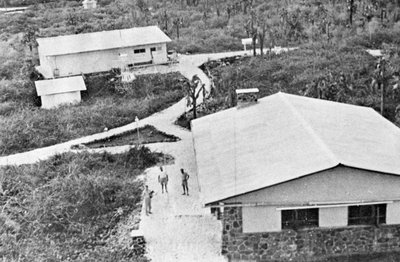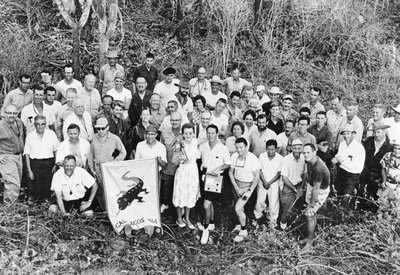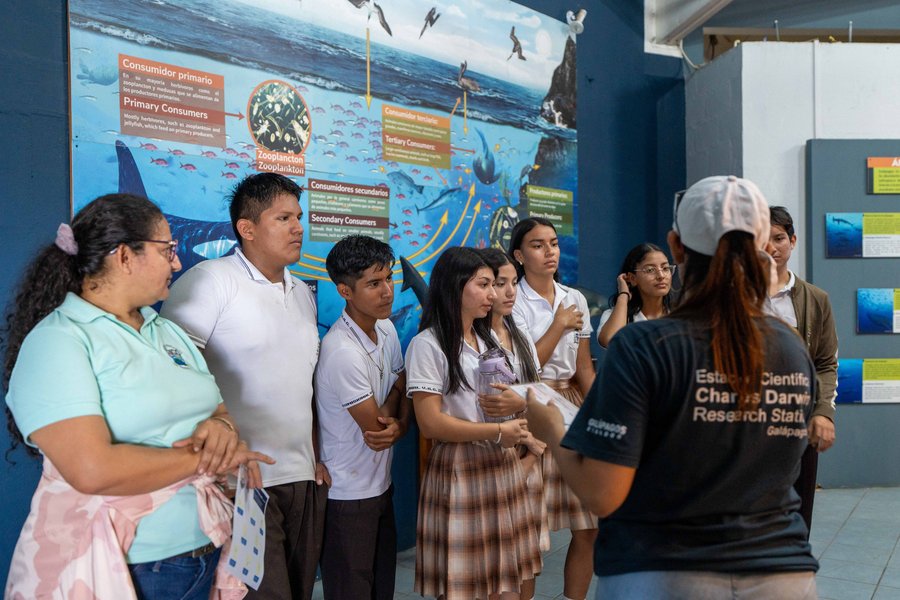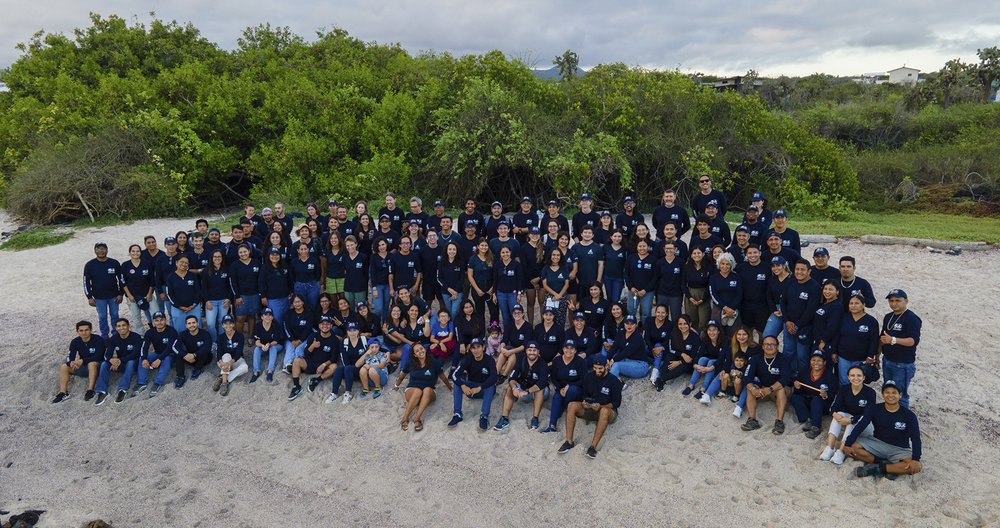The Charles Darwin Foundation: Innovation, Development, and Science in Service of Conservation
Galápagos, July 23, 2024 - With the support of the Government of Ecuador, UNESCO, and IUCN, an international group of scientists, researchers, and conservationists founded the Charles Darwin Foundation (CDF) in 1959. Since then, it has led scientific research, provided technical advice, and offered practical conservation experience, supporting the efforts of the National Park and promoting the sustainable development of the Galápagos Islands and their local community.
A Legacy of Conservation and Science
Since its inception in this dynamic and resilient environment, the CDF has led scientific research and technical advisory in Galápagos. The Charles Darwin Research Station (CDRS) has become the epicenter of fundamental studies on biodiversity, biogeography, and species interactions. These efforts have enabled the design of conservation strategies based on scientific evidence, promoting the sustainable management of this invaluable ecosystem for current and future generations.
Milestones Over the Decades
In 1965, the CDF initiated giant tortoise conservation programs, establishing the Giant Tortoise Breeding Center in Santa Cruz, successfully breeding this iconic species in captivity and reintroducing over 8,000 tortoises to their natural habitat, thus preventing their extinction. In the 1970s, the CDF created the Master Plan for the Protection and Use of the National Park, integrating differentiated space management, a pioneering approach both nationally and internationally.
During this same decade, the CDF launched a campaign to eradicate introduced vertebrates, laying the groundwork for what would become, two decades later, the largest and most successful ecological restoration initiative of its time, the Isabela Project. This initiative eradicated approximately 200,000 goats, donkeys, and pigs on several islands, restoring critical habitats and protecting native species.
In the 1980s, the CDF intensified its efforts to control introduced flora, such as the quinine tree, to recover various Scalesia species that had been discovered.
“Science in Galápagos has been one of the fundamental pillars for making this archipelago one of the best-preserved in the world. Our work not only seeks to fill the gap and need for scientific knowledge necessary to keep it in healthy conditions but also to ensure that science and research work have practical implications for human-nature coexistence. Therefore, thanks to its work over 65 years, the CDF has positioned itself as a reference in science and conservation, in and for Galápagos, recognized globally,” adds María José Barragán, CDF Science Director.


21st Century Innovations
In the early 21st century, after several years of studies, the CDF introduced over 2,000 Australian ladybugs to combat the cottony cushion scale, a pest affecting 62 species of endemic and native plants, as well as some crops. This effort, in collaboration with the Galápagos National Park Directorate (GNPD), exemplifies the CDF's commitment to innovative and sustainable solutions.
Since 1966, the CDF has implemented environmental education programs that today are an essential part of efforts to strengthen education in Galápagos, generating a deep sense of belonging and connectivity between people and nature. Strengthening and professionally training the permanent residents of the islands is a priority for the CDF, which is why, through its university scholarship program, it has awarded more than 260 scholarships, thus promoting opportunities for local professionals.
From 2010 onwards, programs to protect marine and terrestrial birds were strengthened through research and management actions that update their status in international agreements.

Celebration of the 65th Anniversary
To commemorate more than six decades of continuous work, in June 2024, during the 53rd General Assembly, the first stone of the new north wing of the “Tomas Fischer” scientific complex was laid. This new space will house the Natural History Collections, the largest and most important collection in Galápagos and one of the most significant in the world. Additionally, a commemorative mural titled “Paths of Sea and Land: 65 Years of a Legacy of Conservation” was unveiled, a vibrant representation of marine and terrestrial landscapes celebrating the interconnectedness of our ecosystems and the importance of protecting them.
During this assembly, the Charles Darwin Foundation also presented to its Board of Directors the most important milestones espin conservation and environmental education achieved in the past year. In 2023, during the "Galapagos Deep" expedition of the R/V Atlantis, an extensive deep-water coral reef was discovered in the Galápagos Marine Reserve, the first of its kind in the region, providing a unique opportunity to expand the understanding of deep ocean ecosystems. In conservation initiatives, with funding from USAID, a shark and ray conservation project was initiated in Ecuadorian waters together with WWF-Ecuador, and an ambitious project for exploring the deep ocean in Galápagos and the Eastern Tropical Pacific was launched with the support of the Bezos Earth Fund and the Gordon and Betty Moore Foundation. In Environmental Education, the team expanded to San Cristóbal and Isabela islands, actively engaging local youth through clubs and educational activities. Additionally, the "Traveling Libraries" project was reactivated, benefiting 190 young people and adults on various islands.
In 2021, five initial ideas gave rise to the Community of Entrepreneurship of the Galápagos Sea Food System, which today supports more than 20 businesses, led by the CDF. This initiative manages business ideas, incubating and accelerating the commercialization of innovative products. In 2023, this community entered its second phase, resulting in the creation of 16 new ventures that have been mentored and financially supported for their initial launch, positioning Galápagos as a model of resilience and innovation in small-scale fisheries.
In July, the CDF and the GNPD, which also celebrates 65 years, presented their progress and results in joint projects during an Open House that received approximately 1,200 visitors. Throughout the year, more events and activities will be held, highlighting the CDF's ongoing commitment to the conservation of the Galápagos Islands.
“Celebrating our 65th anniversary is not only an opportunity to reflect on our past achievements but also to reaffirm our commitment to the future of the Galápagos Islands. The Open House we held with the GNPD, which also turns 65, symbolizes our continuous dedication to conservation and environmental education. Through new collaborations and innovative projects, we will strengthen studies and research, ensuring that the Charles Darwin Foundation remains a pillar in the protection and study of this invaluable ecosystem, and that its legacy endures for future generations,” emphasized Rakan Zahawi, Executive Director of the CDF.


Commitment to the Future
On its 65th anniversary, the Charles Darwin Foundation reaffirms its commitment to science and conservation in the Galápagos Islands. Its collaborative work with the GNPD and other institutions has been crucial in protecting this invaluable ecosystem. The CDF will continue to be a reference in scientific research and conservation, ensuring that Galápagos remains an example of adaptation and resilience for future generations.
For media inquiries, contact:
Charles Darwin Foundation
Daniela Ibarra – Leslie León
comunicacion@fcdarwin.org.ec
About the Charles Darwin Foundation
The Charles Darwin Foundation for the Galapagos Islands (CDF) is an international non-profit organization present in Galápagos since 1959, operating under a special agreement with the Government of Ecuador. Its mission, and that of its Research Station, is to address the greatest threats and challenges of Galápagos through scientific research and conservation actions to protect one of the world's most important natural treasures. Currently, the CDF carries out more than 25 research and conservation projects and oversees more than 135,000 specimens within its Natural History Collections. Our diverse team of over 140 people is primarily composed of Ecuadorian citizens, with more than 60% being residents of the Galápagos Islands. For more information, visit: www.darwinfoundation.org






